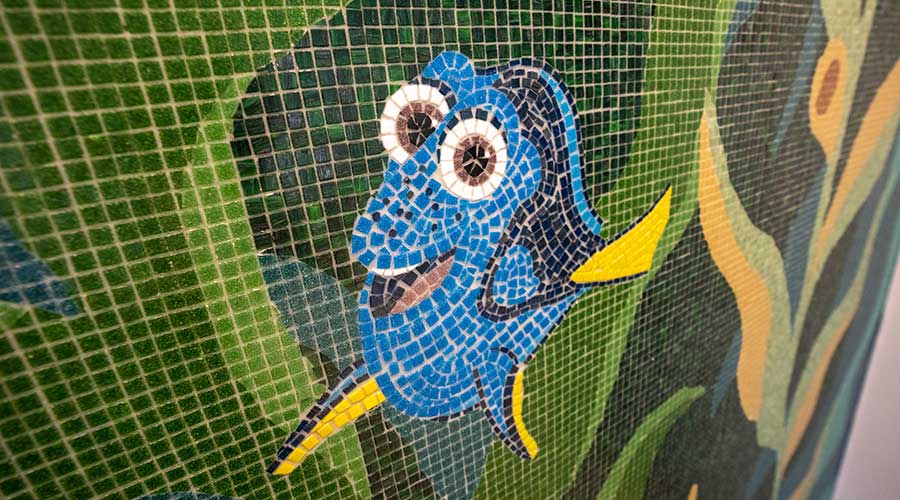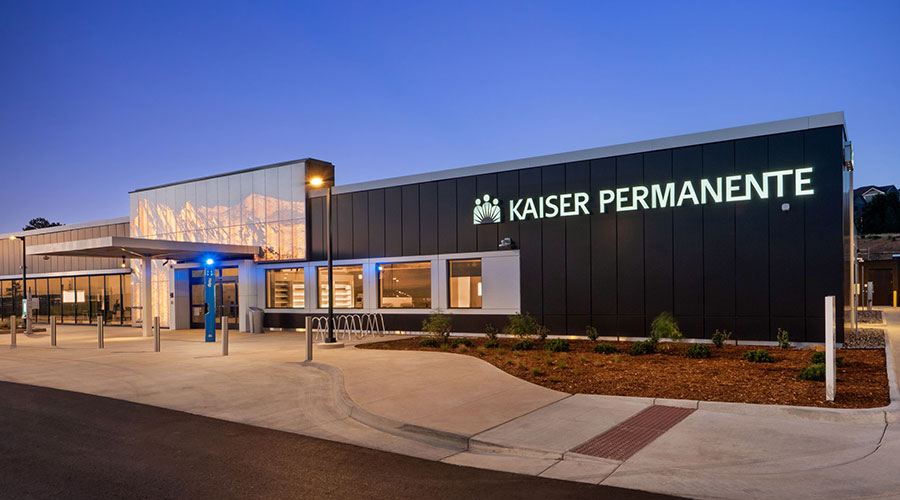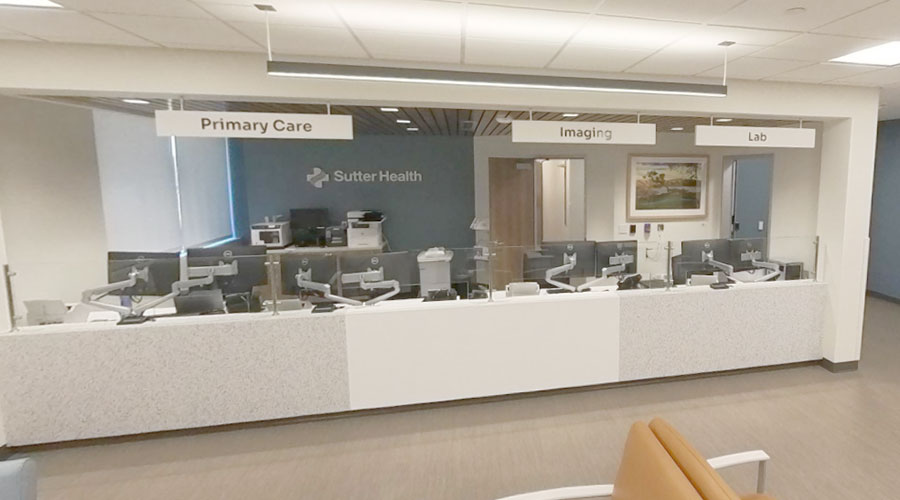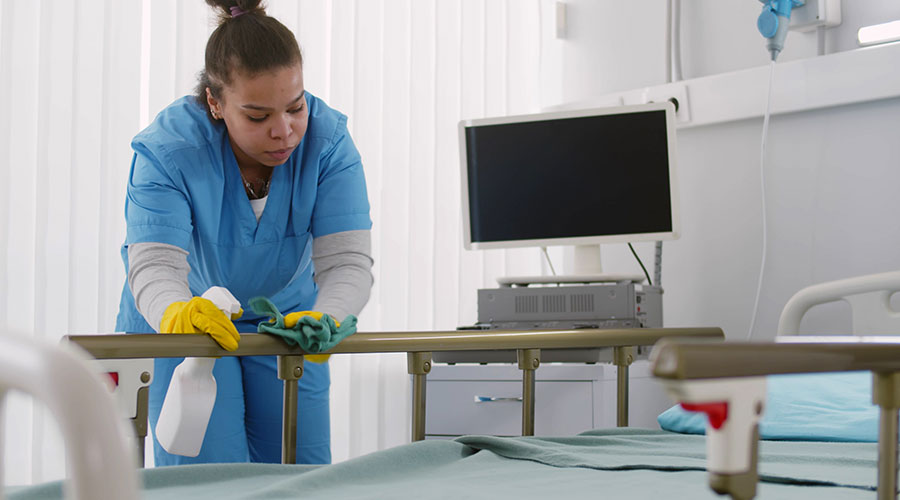Art can express various ideas and create equally as many emotions for its viewers. With healthcare settings being potentially stress or fear-inducing for some patients, calming andwelcoming art could be the counterweight to balance out stirred emotions.
“Aside from being aesthetically pleasing to look at, artwork carries with it a nurturing quality; the attention that an artist pays to their work draws parallels to the care that a healthcare practitioner might give their patient,” says Erin McCollum, design lead at AOA. “When a space feels artful, we recognize that someone placed thought and intention into that area. In this way we can help patients feel comforted in places that might otherwise be viewed as unfamiliar or intimidating. Patients can innately feel reassured that this space was made with great consideration of their needs.”
In a similar vein, artwork of familiar and famous animated characters can brighten up a patient’s overall mood. Enter AdventHealth ER at Flamingo Crossings Town Center, a healthcare facility located in Winter Garden, Florida, that also happens to be near Walt Disney World. AdventHealth ER at Flamingo Crossings Town Center is also home to artwork of notable Disney and Pixar characters.
According to McCollum, it is only natural for different audiences to prefer different types of content. AOA addressed that in this facility by collaborating with Disney Live Entertainment to create custom media and content. McCollum says that through a localized app, patients and their families can choose between three calming animated galleries, each themed to a unique art style and featuring characters from select Disney and Pixar films.
“The inclusion of these characters throughout the facility via media, murals and glittering mosaics offers a sense of inspiration to patients who might know those characters’ stories,” says McCollum. “The goal was to provide patients with familiarity and autonomy in their care journey in ways that reinforced a healing-focused environment.”
Even without recognizable characters, strategic and effective artistic design can still have benefits for patients. McCollum adds that for this facility, color theory played a major role in AOA’s design. Cooler tones were used alongside undertones of green and soft neutrals to foster a calming appearance for the facility. McCollum further notes that these choices speak back to a patient’s familiarity with nature to help emotionally ground them while also providing a soothing, serene backdrop for their care journey.
Additionally, specific types of artwork or artistic styles can have a greater positive impact on a patient’s overall experience.
“We found that the use of organic linework and curved forms are easier on the eyes than geometric or harsh edges,” says McCollum. “Inspired by the movement of water and currents, the murals throughout the facility are a direct reflection of that principle.”
However, McCollum says that what artwork an individual finds calming will ultimately be subjective. Finding that balance between subtle and noticeable art, while tricky, is key to designing for wider audiences.
Overall, healthcare facilities can be emotional rollercoasters for patients as they begin or continue their care journeys. Art is one way of making those journeys more comforting and calming for the patient. Effective art design integrated into a healthcare facility’s overall design could prove a vital role in the patient’s experience.
Jeff Wardon, Jr. is the assistant editor for the facilities market.

 The Future of Backup Power Systems in Healthcare Facilities
The Future of Backup Power Systems in Healthcare Facilities Infection Control is Key to Ongoing Measles Outbreak
Infection Control is Key to Ongoing Measles Outbreak Kaiser Permanente to Open New Parker Medical Offices
Kaiser Permanente to Open New Parker Medical Offices Skanska Completes Renovation for New Sutter Health Care Center
Skanska Completes Renovation for New Sutter Health Care Center Probiotic Cleaners: The Start of a Cleaning Revolution?
Probiotic Cleaners: The Start of a Cleaning Revolution?